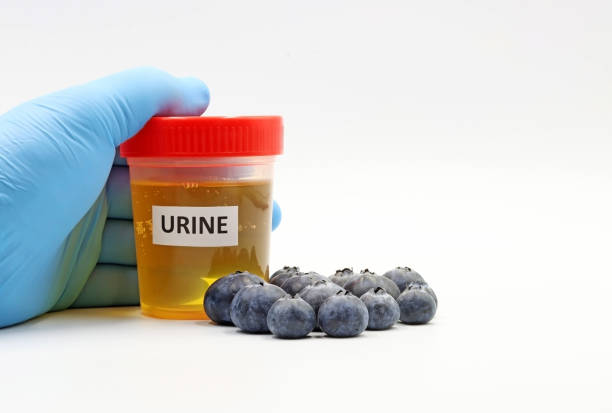Chlamydia is the most common sexually transmitted disease (STD).
We have to detect symptoms of chlamydia in females like itching, yellowish secretion, and pain early to prevent complications.
This disease can spread among women and men, but we consider it a female disease, because its percentage in women is higher than in men, and the damage that happens in women because of the infection may be fatal or permanent and can't be cured.
Females have more chances of being infected by chlamydia and other sexually transmitted diseases because of the anatomy of their sexual organs.
Their vagina is thinner, more humid, and more delicate which makes a good environment for viruses and bacteria to penetrate it and multiply.
Before talking about symptoms of chlamydia in females we have to know some points about chlamydia.

How does chlamydia infection spread?
What is the cause of chlamydia infection?
Chlamydia is caused by a bacteria called chlamydia trachomatis.
- Chlamydia can’t spread through usual contact like hugging, kissing, sneezing, coughing, holding hands, sharing food, or sitting on toilets
- It happens by oral, vaginal, or anal sex with someone who has the infection.
- The infection transmits from a pregnant woman who has the infection to the baby during birth.
- In rare conditions, chlamydia can be transmitted from one infected person to another if he touches his eyes with a hand that has infected fluid on it.
Who are the people with a high risk of chlamydia infection?
- Sexually active young women aged between (14-25).
- Older women who have multiple partners or have a new partner who is infected.
- Bisexual men are at high risk as chlamydia can spread easily by oral sex.

Signs and symptoms of chlamydia in females
However the person can be infected for months or years without seeing any symptoms, there are symptoms of chlamydia in females that may appear within 2-14 days after infection.
- Yellowish abnormal discharge from the vagina, with a strong unpleasant smell is considered one of the first symptoms of chlamydia in females.
- Irritation or itching around the vagina is one of the signs of chlamydia in females.
- Pain during sex will occur as there will be swelling inside the vagina due to inflammation is considered one of the important chlamydia infections in females.
- Burning during urination, with an increase in the urination frequency per day
- If the case is complicated there will be more severe symptoms of chlamydia in females like
- Bleeding between periods.
- Rectal pain, abdominal pain, and back pain are the symptoms of chlamydia in females in severe conditions.
- Severe conditions may have nausea and fever as symptoms of chlamydia in females.
- If symptoms of chlamydia in females are noticed and not treated, chlamydia will cause permanent damage as it can cause infertility by damaging fallopian tubes ( that connect the ovary to the uterus).
- If symptoms of chlamydia in females are not treated it may lead to ectopic pregnancy ( this pregnancy occurs outside the uterus as the egg is fertilized and implants outside the female’s uterus).
- Untreated conditions may cause serious damage to the reproductive system which leads to PID ( pelvic inflammatory disease which is inflammation of the upper genital tract in women)
- That may lead to missing the woman her period.
- Untreated chlamydia may spread to other parts of the body such as the eyes, throat, and anus.
- If a mother has a chlamydia infection she may give birth too early which is known as a premature baby.
-
The mother can transmit the infection to her baby during birth, which may lead to serious complications such as pneumonia, eye infection, and even blindness.
It’s also important to know the symptoms of chlamydia in males as a partner in females’ sexual lives.
- The first symptom in males is pain during urination.
- Abnormal cloudy or watery discharge from the tip of the penis.
- Swelling, redness, and itching at the opening of the urethra.
- Inflammation at one or both of the testicles.
- In serious conditions in males, there will be a great decrease in the numbers and motility of the sperms, which affect conception.

After detecting the symptoms of chlamydia in females, how can she diagnose it?
That can be done by two methods:
- Checking a urine sample for the bacteria.
A first-catch urine sample is preferred for accurate results, so you have to take the sample in the morning, or you have to avoid urination before taking that sample for at least 2-3 hours.
- Getting a swap from the cervix in women or from the urethra in males. This method is considered more sensitive and accurate for detection of chlamydia.
You can take the sample or the swab at home, by buying an at-home collection test and then sending it to the lab for a test. The result appears in 90 minutes.
Is Chlamydia infection cureable?
The answer is yes,
But you can't get rid of chlamydia by increasing your immunity by taking vitamins or minerals for example.
The only way to get rid of it is treatment by drugs.
As chlamydia is a bacterial disease it can be treated using specific antibiotics.
The first choice drugs for the treatment of chlamydia are
1- A single dose of azithromycin (Zithromax)1 gm, followed by 500 mg once a day for two days.
2- Doxycycline which is taken every day for two weeks.
- The patient will be cured after one or two weeks of taking the antibiotic.
- You have to finish all the recommended doses even if you feel better.
- Women with severe symptoms of chlamydia in females may need intravenous antibiotics and have a hospital cure.
- To be sure of a complete cure for the disease you have to take another dose of the antibiotic after finishing the first one.
Notice that it's recommended that your partner have to take the treatment along with you to prevent reinfection.
How can a person protect himself from chlamydia infection?
- Using a condom during sex.
- Females should use a dam which is a thin latex that covers the vagina during oral sex.
- Use a condom to cover the penus in males during oral sex.
- One sexual relationship is the best way to avoid chlamydia and other STDs.
So we can summarize symptoms of chlamydia in females as abnormal discharge, pain during sex, burning during urination, bleeding between periods, itching, and inflammation in the vagina
After diagnosing chlamydia it must be treated with antibiotics for a complete cure from it.


You must be logged in to post a comment.